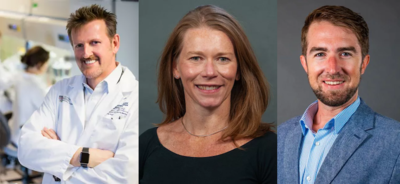Advancements in Basic Science: Implications for Sports Injury Prevention

VAIL/COLORADO SPRINGS, COLO., June 8, 2023 – Since 1988, Steadman Philippon Research Institute (SPRI) has been working toward the goal of unlocking the secrets of healing, finding cures and enhancing lives through global leadership in regenerative medicine, scientific research, innovation and education. That is SPRI’s mission statement, and it was made very clear during Day Two of the 7th Annual Injury Prevention Symposium, virtually presented by Steadman Philippon Research Institute (SPRI) and the United States Olympic & Paralympic Committee (USOPC).
Johnny Huard, Ph.D., Chief Scientific Officer and Director of the Linda and Mitch Hart Center for Regenerative and Personalized Medicine at SPRI, was the first to speak in the session on advancements in science. He also shared some thoughts on his team.
“I tell people we're not a big team when you compare us to a big university, but we are complete,” said Dr. Huard. “That’s because we have all the different personnel to address all the questions from the bench, all the way to the bedside. I'm very proud of this.”
Dr. Huard’s talk focused on the future of affordable biologics as a surgical treatment and its application for injury prevention and recovery. Currently, the most common biologics are platelet-rich plasma and bone marrow aspirate. Huard’s research is also turning to stem cell banking.
During the live question and answer segment of the session, he shared his vision for the future.
“Well, I think I'm a dreamer,” said Huard. “So, I'm going to tell you what I think is going to happen in the future. The first thing is what I talked about, stem cell banking. Thinking about all those athletes, banking their stem cells early on in their careers, they get injuries and the stem cells can help them significantly to heal faster and better.”
Colin Smith, Ph.D., is a research scientist in the Biomedical Engineering Department at SPRI. He followed Dr. Huard with a talk on the influence of a novel knee brace design on skiing biomechanics.
His team studied how an innovative knee brace design that provides passive assistance to unload the quadriceps affects joint angles and muscle activation using wearable sensor systems when people with osteoarthritis ski. The team conducted the research indoors on an artificial ski slope and outdoors on a ski mountain.
During the live Q and A portion, Dr. Smith revealed some information about another study occurring in the lab.
“We have another active study looking at ski performance imbalance and whether wedge insoles in your ski boot can improve your balance,” said Smith. “The goal for that study is ski injury reduction: the idea of improving balance and control to avoid falls and prevent injuries.”
Chelsea Bahney, Ph.D., Principal Investigator and Program Director of Bone Repair and Regenerative Therapeutics at SPRI, began her talk by pointing out that while the goal of the symposium is to discuss strategies to prevent injuries, unfortunately, they are an inherent part of any high-level sport.
Dr. Bahney shared some of her team’s research on one of the most common injuries worldwide—bone fractures.
According to Bahney, there are 178 million new fractures every year. Specifically at the Olympic Games, fractures are the third most common injury. During the Winter Games, the most fractures occur in ski, aerial snowboard cross and slopestyle, while at the Summer Games they occur most frequently during BMX mountain biking and Taekwondo. In recreational sports, fractures account for just over 20% of emergency room visits, with football and inline skating causing the most injuries.
When monitoring fracture healing, X-ray and clinical observation remain the standard of care. However, X-rays can only detect late-stage bone healing, and both techniques are qualitative.
“Following a fracture, one of the challenges is determining when the bone is adequately healed enough to allow the athlete to return to play,” said Bahney. “We believe there's an unmet clinical need to develop improved technologies to quantify bone healing.”
Bahney’s team is researching a technique to use biomarkers obtained from a simple blood draw to analyze the biological healing of the bone. She described in detail several studies involving hundreds of patients with various types of fractures.
“At the Steadman Clinic and Steadman Philippon Research Institute, our goal is to personalize medicine by using the most advanced tools available. Biomarkers have the potential to advance clinical care and optimize return to play.
“Part of our success at SPRI is because we are a small team; we don't have the barriers that other big universities have. Our offices are all right next to each other. We see each other multiple times a day and I think that's where you get the great brainstorming of new ideas and new perspectives.”
For further information, contact Lynda Sampson, VP External Affairs (lsampson@sprivail.org, 970/479-1563)

